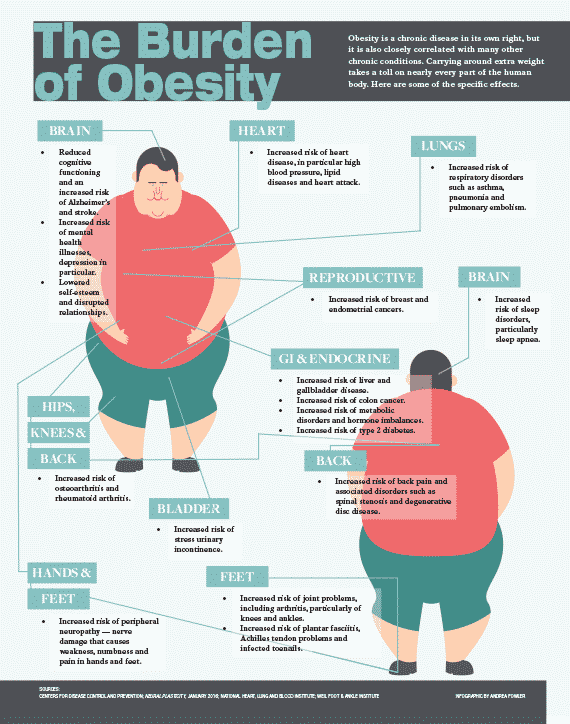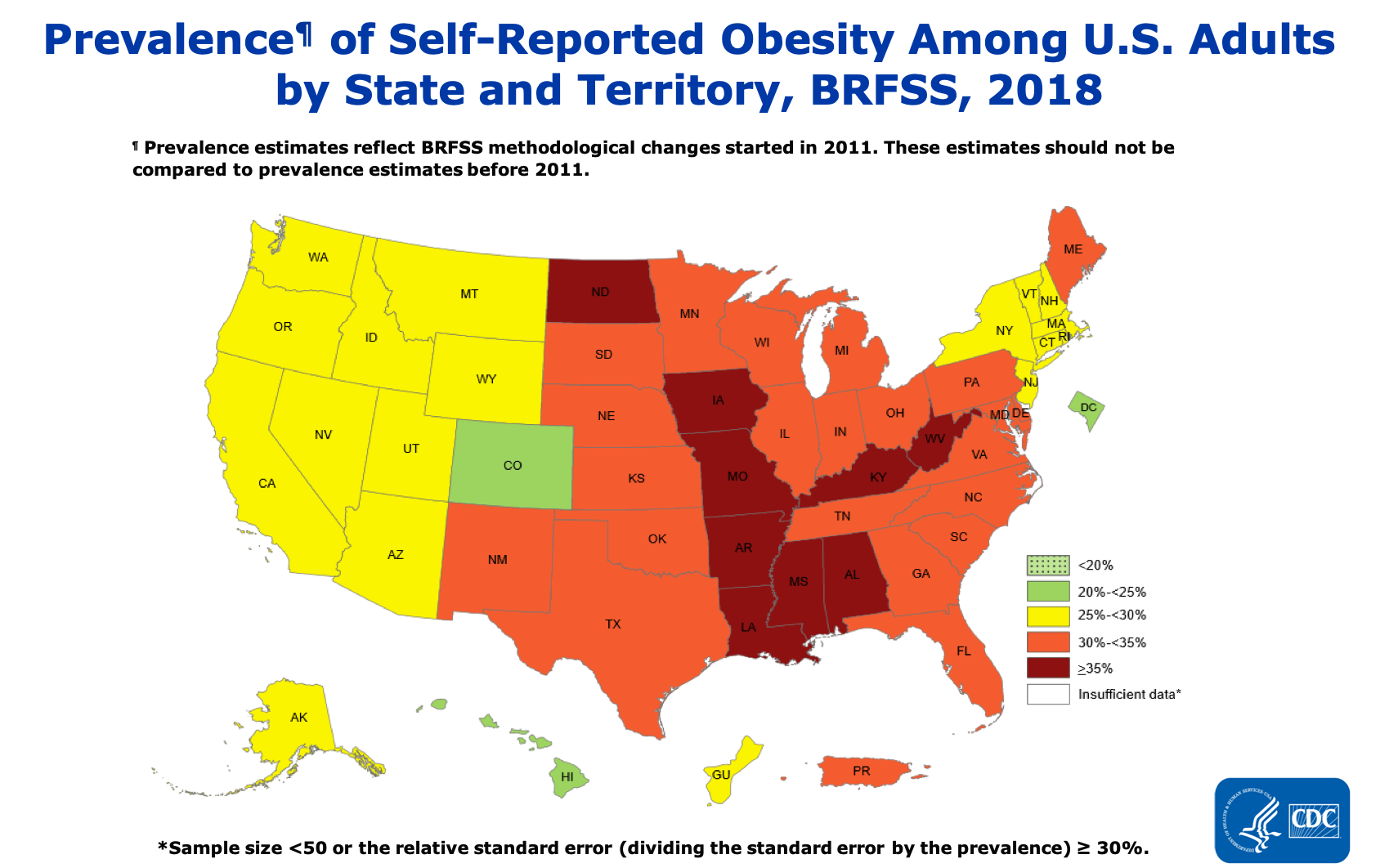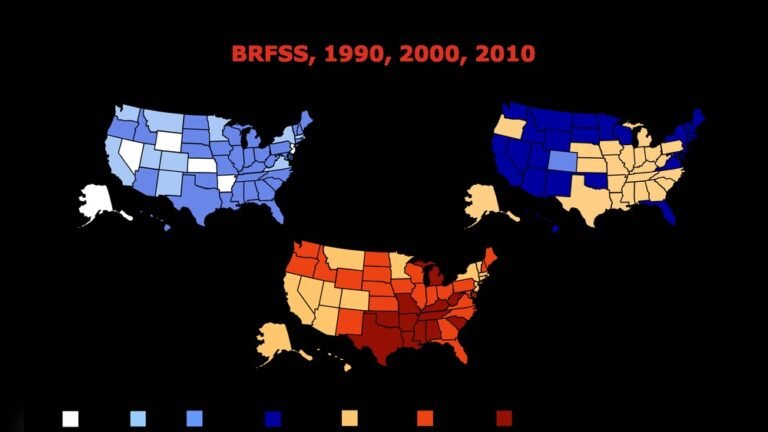Are you aware that obesity isn’t just a personal health issue but a growing crisis affecting millions worldwide? The obesity epidemic describes the rapid rise in the number of people, both adults and children, carrying excessive body fat.
This surge isn’t random—it’s driven by changes in what we eat, how much we move, and the environments we live in. Understanding what the obesity epidemic really means for you and your loved ones is crucial because its impact goes far beyond appearance.
It affects your health, your daily life, and even the economy. Keep reading to discover why this epidemic is happening, what it means for your future, and how it might be stopped before it affects even more lives.
Obesity Epidemic Defined
The obesity epidemic refers to the rapid and widespread increase in obesity rates worldwide. It affects many countries and populations. This rise has become a serious public health concern. Obesity leads to many health problems and strains healthcare systems. Understanding what defines this epidemic helps us see its scale and impact.
Global Rise In Obesity
Obesity rates have grown sharply in recent decades. This increase spans across continents and cultures. High-calorie processed foods and less physical activity drive this trend. Urbanization and lifestyle changes also play a role. The World Health Organization reports billions affected globally. The epidemic shows no signs of slowing down.
Adults And Children Affected
Obesity impacts both adults and children at alarming rates. Adults face risks of heart disease, diabetes, and other conditions. Childhood obesity is rising too, leading to lifelong health issues. Sedentary habits and unhealthy diets contribute heavily. Families, schools, and communities all feel the effects. Early intervention is crucial to protect future generations.
Key Causes
The obesity epidemic has many causes that work together. These causes affect how people eat, move, and live. Understanding these key reasons helps us see why obesity rates grow fast.
Dietary Shifts
People eat more processed and fast foods. These foods have many calories but few nutrients. Sugary drinks and snacks add extra calories. Portion sizes have grown larger over time. This leads to eating more calories than the body needs.
Sedentary Behavior
Many people spend most of their day sitting. Work, school, and leisure often involve little movement. Watching TV, using phones, and playing video games increase screen time. Less physical activity means fewer calories are burned. This causes weight gain and obesity risk.
Environmental Influences
Neighborhoods with few parks limit outdoor activities. Many areas lack safe places to walk or bike. Fast food restaurants and convenience stores are common. Healthy food options may be hard to find or expensive. These factors make it harder to live a healthy lifestyle.
Health Risks
Obesity carries serious health risks that affect millions worldwide. It increases the chance of developing many chronic illnesses. These diseases often reduce quality of life and can shorten lifespan. Understanding these risks helps highlight why the obesity epidemic is a major public health concern.
Chronic Diseases Linked To Obesity
Obesity raises the risk of heart disease, the leading cause of death globally. Excess fat strains the heart and blood vessels. It also increases blood pressure and bad cholesterol levels.
Type 2 diabetes is another common condition tied to obesity. High body fat causes insulin resistance, making it harder to control blood sugar. This can lead to serious complications.
Obesity also contributes to certain cancers such as breast, colon, and liver cancer. Fat tissue produces hormones that may promote tumor growth. Joint problems and sleep apnea are frequent in obese individuals as well.
Impact On Mental Health
Obesity affects more than physical health. It can harm mental well-being and self-esteem. People living with obesity often face social stigma and discrimination.
This can cause anxiety, depression, and stress. Emotional eating may worsen weight issues, creating a difficult cycle. Support and treatment for mental health are vital alongside physical care.

Credit: synappsehealth.com
Economic Burden
The economic burden of the obesity epidemic is heavy and far-reaching. It affects individuals, families, and entire societies. The costs are not only medical but also impact productivity and economic growth. Understanding these costs helps highlight the importance of addressing obesity as a public health priority.
Healthcare Costs
Obesity leads to many health problems like diabetes, heart disease, and stroke. Treating these conditions requires significant medical resources. Hospitals, doctors, and medications all add to rising healthcare expenses. These costs strain public health systems and private insurers alike. Preventing obesity could reduce these medical bills significantly.
Productivity Losses
Obesity affects work performance and attendance. People with obesity may experience more sick days and lower energy levels. This reduces their productivity at work. Employers face higher costs due to lost output and increased disability claims. The overall economy suffers from these productivity losses, slowing growth and innovation.
Measuring Obesity
Measuring obesity helps understand its extent and health risks. Accurate measurement guides treatment and public health strategies. Several methods exist, each with strengths and weaknesses. The most common tools include Body Mass Index and waist circumference. These measurements provide quick estimates of body fat and risk levels.
Body Mass Index (bmi)
BMI is a simple calculation using weight and height. It divides weight in kilograms by height in meters squared. BMI categories range from underweight to obese. It helps identify individuals at risk of obesity-related health problems. Doctors and researchers widely use BMI for screening and monitoring.
Waist Circumference
Waist circumference measures abdominal fat. A measuring tape is placed around the narrowest part of the waist. High waist circumference indicates more belly fat, linked to heart disease and diabetes. This measure adds important information beyond BMI. It highlights risks from fat around vital organs.
Limitations Of Bmi
BMI does not measure body fat directly. It cannot distinguish between muscle and fat. Athletes may have high BMI but low body fat. BMI may not reflect fat distribution or health risks accurately. It is less reliable in older adults and children. Combining BMI with other measures gives a better health picture.

Credit: chicagohealthonline.com
Global Statistics
The obesity epidemic affects millions worldwide. It shows a fast rise in overweight and obesity cases. This rise poses serious health and economic challenges. Understanding global statistics helps grasp the epidemic’s scale.
Adult Prevalence Rates
Worldwide, over 650 million adults are obese. This number has tripled since 1975. Nearly 40% of adults aged 18 and older are overweight. High-income countries report the highest obesity rates. Middle and low-income countries also see rapid increases. Obesity in adults leads to greater risk of heart disease and diabetes.
Child And Adolescent Trends
More than 340 million children and teens aged 5-19 are overweight or obese. Rates have risen sharply in recent decades. Childhood obesity often continues into adulthood. This trend raises concerns about future health problems. Sedentary behavior and poor diet contribute to this rise. Early intervention is vital to stop this growing trend.
Environmental Impact
The environment we live in shapes our health choices every day. It influences how active we are and what foods we eat. These factors play a big role in the obesity epidemic. Changes in our surroundings can make it easier or harder to maintain a healthy weight.
Many communities face challenges that lead to less physical activity and poor diet. These challenges include how cities are built and what foods are easy to get. Understanding these environmental impacts helps us see why obesity rates keep rising.
Urban Design And Walkability
City layouts affect how often people walk or exercise. Many neighborhoods lack sidewalks, parks, or safe places to walk. This discourages daily physical activity. Long distances between homes and shops mean people rely more on cars. This reduces chances for regular movement and burns fewer calories.
Walkable neighborhoods encourage people to walk more. This helps control weight and improves health. Better urban design can support active lifestyles and fight obesity.
Food Accessibility
Access to healthy food impacts diet quality. Some areas, called food deserts, have few grocery stores. Fast food and convenience stores are more common there. These places offer mostly processed, high-calorie foods. Fresh fruits and vegetables are hard to find or expensive.
Limited access to healthy foods leads to poor eating habits. This contributes to weight gain and obesity. Improving food accessibility can help people choose better nutrition and maintain a healthy weight.
Prevention Strategies
Preventing the obesity epidemic requires a mix of strategies at different levels. Simple actions by individuals and larger efforts by governments and communities all play a part. These prevention strategies focus on improving diet, increasing physical activity, and creating supportive environments.
Lifestyle Changes
Eating balanced meals is key to preventing obesity. Choose more fruits, vegetables, and whole grains. Limit sugary drinks and fast food. Regular exercise helps burn calories and keeps the body healthy. Aim for at least 30 minutes of activity daily. Small changes like walking more or using stairs also help. Consistent habits make a big difference over time.
Policy Interventions
Governments can create rules to support healthy choices. Taxing sugary drinks reduces their consumption. Clear food labels help people make informed decisions. Policies can limit junk food marketing, especially to children. Urban planning can promote walking and biking. These actions make healthy living easier and more common.
Community Programs
Local groups can offer support and education. Schools can provide healthy meals and daily exercise. Community centers may host fitness classes or cooking workshops. Programs encourage teamwork and motivation. They also reach people who might lack access to healthy options. Strong communities help fight obesity together.

Credit: openoregon.pressbooks.pub
Conclusion
The obesity epidemic affects millions worldwide, causing serious health issues. Poor diet, less activity, and environment play big roles. Children and adults both face growing risks every year. Fighting obesity needs changes in lifestyle and community support. Small steps can help reduce this global problem.
Everyone’s health depends on better choices and awareness. The challenge is real but not impossible to overcome.



